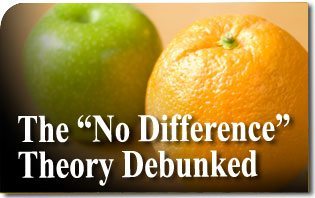One of the main arguments proponents of same-sex “marriage” bring up is that there is no difference between children who are reared by a mother and a father, and children who are brought up by same-sex “couples.” However, in a recent study called “Emotional Problems among Children with Same-Sex Parents: Difference by Definition”Paul Sullins, an American sociologist, shows how this is a myth.
There have been dozens of studies over the past two decades supposedly bolstering this “no difference” myth. However these results have come under question recently, mainly because of substantial weaknesses in many of the studies, and the fact that new studies designed to overcome those weaknesses have discovered poorer outcomes.
Both critics and defenders of these studies agree that a critical issue has been the lack of sufficiently large random samples of the small population of same-sex “couples.” This led to the persistent use of small, non-representative samples. Sullins notes “Rosenfeld, a defender, observes that the mean sample size of children with same-sex parents in the literature was only 39 cases.” And “[/vc_column_text][/vc_column][/vc_row]""""[vc_column_text]nly four studies used a probability (random) sample; the largest of these included only 44 same-sex families.” While another forty-five studies usually recruited from homophile sources such as LGBT events.[1]
Paul Sullins on the other hand, based his research on the National Health Interview Survey (NHIS) from 1997 to 2013. The NHIS was also clear in defining same-sex “couples” as those who said their partner was their “spouse.” Thus, he was able to study 512 children, a big enough number to be representative. He found the biggest difference between children of normal parents and same-sex “couples” was that they suffer more emotional problems when brought up by the latter.
For example, Sullins found that 7.1% of children raised by normal families suffered from Attention Deficit Hyperactivity Disorder (ADHD) while 15.5% of children reared in same-sex “families” suffered from ADHD, more than double. Children with learning disabilities were 8% compared with 14.1%, while children with serious emotional problems were 7% compared to 17%.[2]
Sullins carefully used “controls” to figure out what was causing the difference. He wanted to make sure which aspects of the child’s life were influencing his upbringing. One of Sullins’ controls was adoption. While adopted children generally suffer more emotional problems, only 11% of children adopted by normal families reported emotional problems. On the other hand, this ratio rose to 22% for children who are adopted by same-sex “couples.”
Another control was bullying, a frequent argument used by the homosexual movement to explain emotional problems in their children. Sullins found the difference negligible – 19% for children who lived with normal parents and 15% for those brought up by “parents” of the same sex. Sullins also studied parental emotional problems which was 3.4% to 6%. None of these controls fully explained the differences between same-sex “couples” and normal couples.[3]
Biology, however, played a huge role in explaining the difference. Children raised by same-sex “couples” were over twice as likely to have emotional problems. After adjusting for age, race, sex, education and income, Sullins states that biological ties – which are obviously lacking in a homosexual relationship – “uniquely and powerfully distinguishes” the child’s outcome.[4] Sixty-four percent of the children studied lived with both of their married, biological parents. Of these, only 4.3% reported having emotional problems.[5]
These differences were found in cases of emotional problems, learning disabilities, and ADHD. Children raised by same-sex “couples” all fared much worse. Sullins has proved how all the normal excuses; bullying, adoption, or even parental emotional problems cannot be used. The main difference he found was the lack of biological ties in same-sex “families.” The “no difference” theory simply does not hold water.[/vc_column_text][/vc_column][/vc_row]""""[vc_message message_box_color=”grey” icon_fontawesome=”fa fa-angle-right”]Taking a Principled not a Personal Stand
As practicing Catholics, we are filled with compassion and pray for those who struggle against violent temptation to sin, be it toward homosexual sin or otherwise.
We are conscious of the enormous difference between these individuals who struggle with their weaknesses and strive to overcome them and others who transform their sin into a reason for pride, and try to impose their lifestyle on society as a whole, in flagrant opposition to traditional Christian morality and natural law. However, we pray for them too.
According to the expression attributed to Saint Augustine, we “hate the sin but love the sinner.” And to love the sinner, as the same Doctor of the Church explains, is to wish for him the best we can possibly desire for ourselves, namely, “that he may love God with a perfect affection.” (St. Augustine, Of the Morals of the Catholic Church, no. 49, www.newadvent.org/fathers/1401.htm)[/vc_message][/vc_column][/vc_row]""""[vc_column_text]
[1] Paul Sullins, “Emotional Problems among Children with Same-Sex Parents: Difference by Definition,” British Journal of Education, Society, & Behavioural Science, Vol.: 7, Issue 2, published Feb. 18, 2015, p. 100. Also available at http://www.sciencedomain.org/abstract.php?iid=823&id=21&aid=8172.
[2] Mark Regnerus, “New Research on Same-Sex Households Reveals Kids do Best with Mom and Dad,” Public Discourse, Feb. 10th, 2015 available at http://www.thepublicdiscourse.com/2015/02/14417/, accessed 3/11/15.
[3] Ibid. p. 1
[4] Sullins, p. 113
[5] Ibid.
[/vc_column_text][/vc_column][/vc_row]

